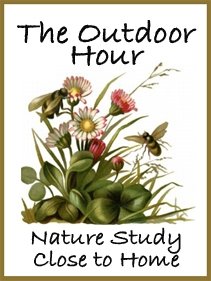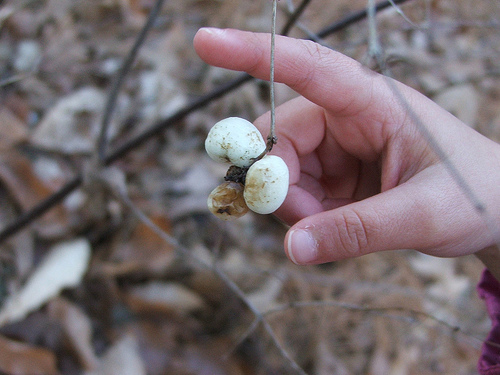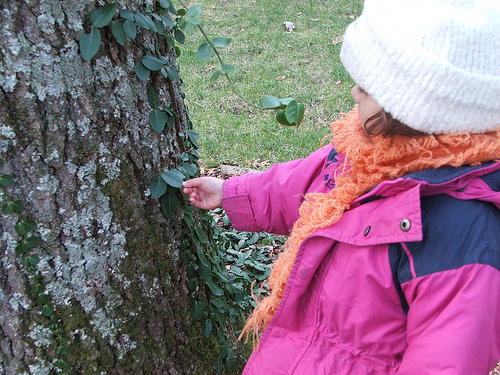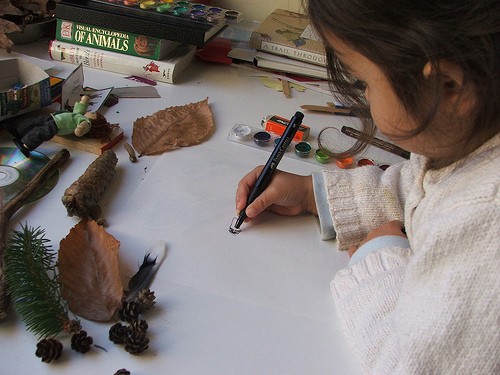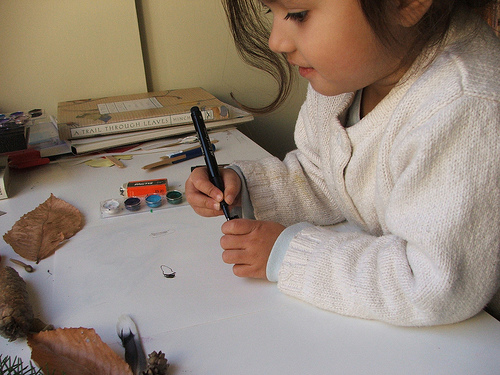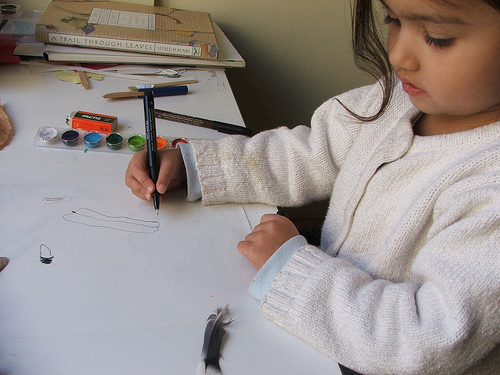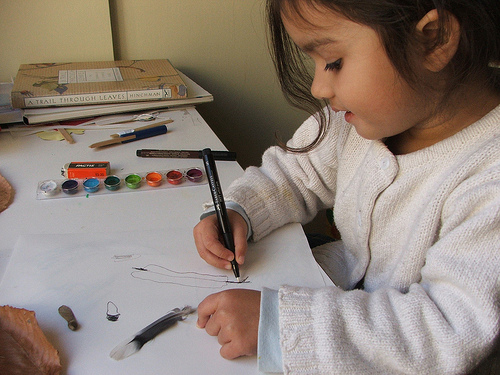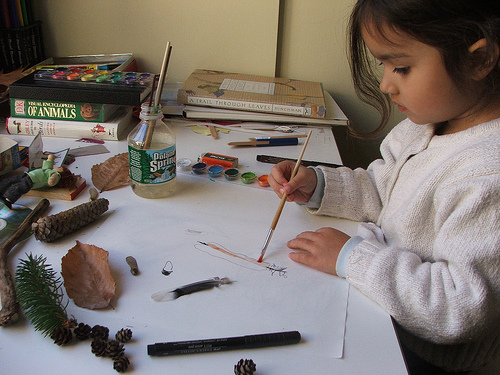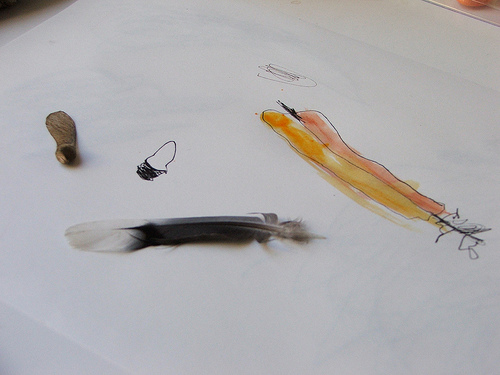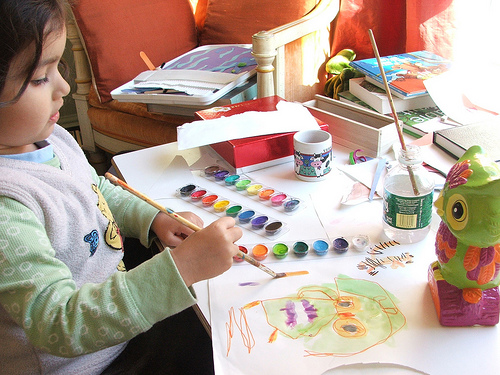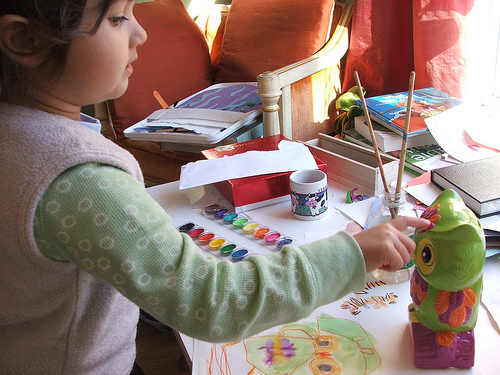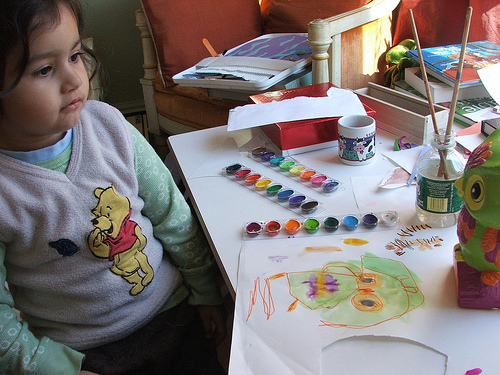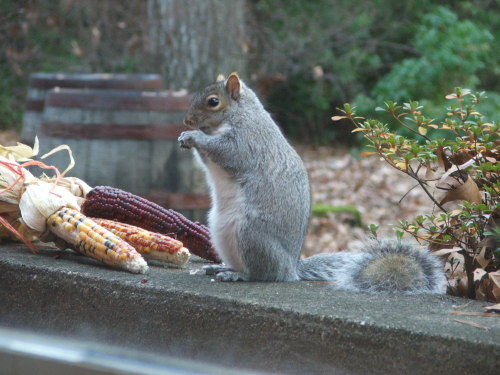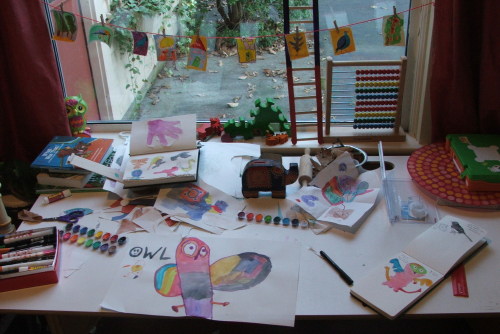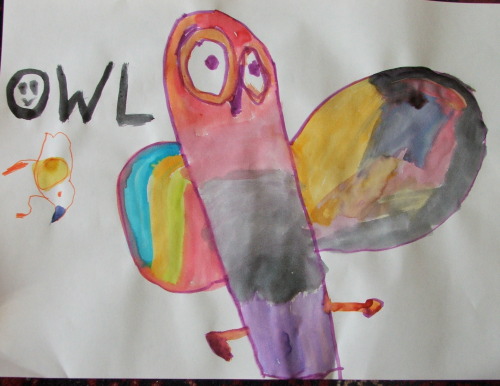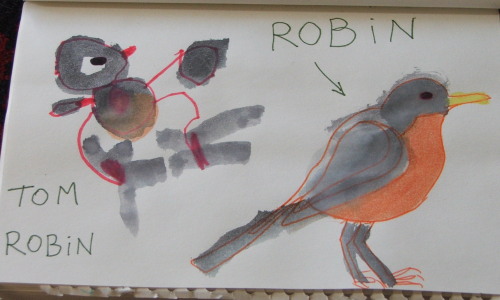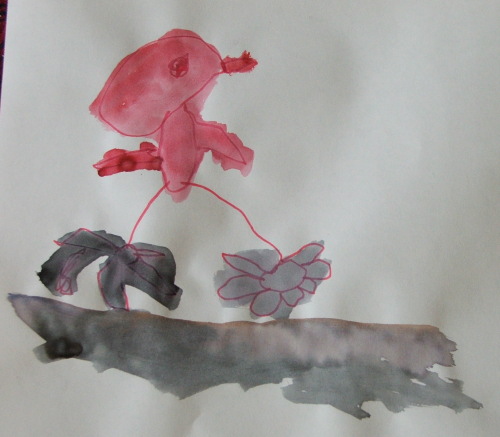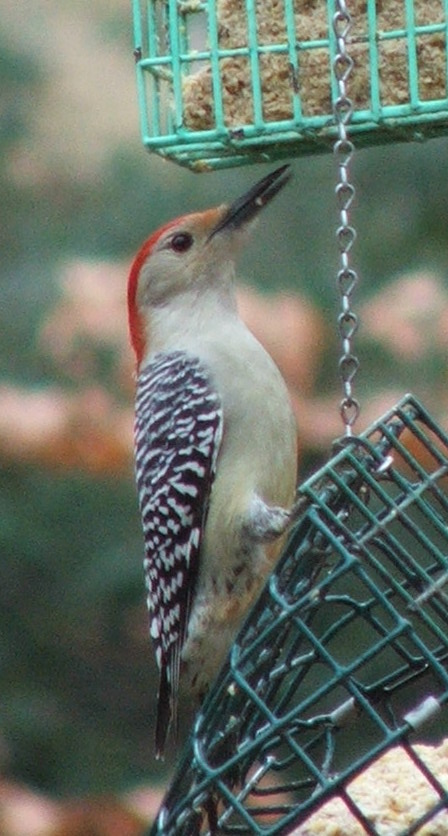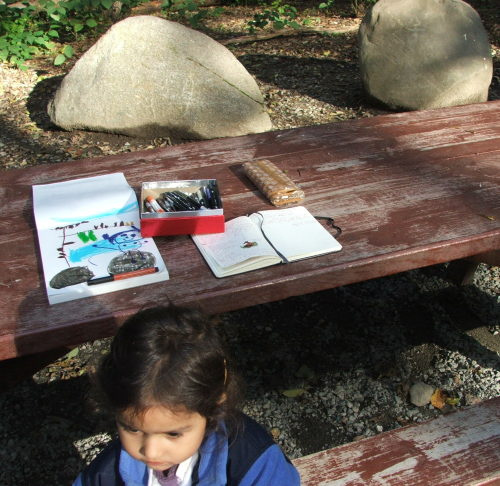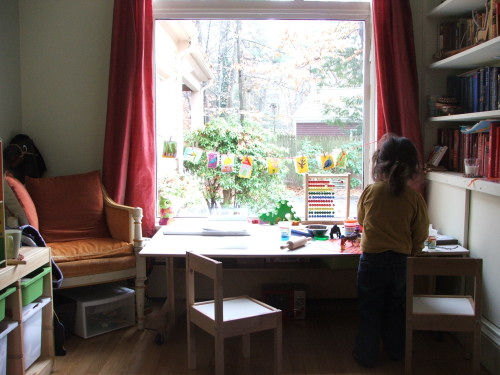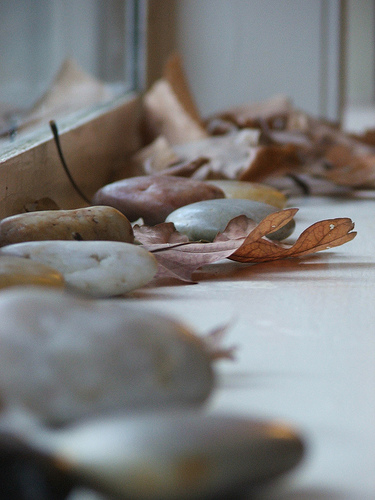
Though I am still feeling sick, we went outside. It was a good day for it and Amie really wanted to. It was bright, with some clouds moving in, a few gusts of wind but otherwise not too blustery, and unseasonably mild (mid 40s). We bundled up and went for a long walk around the block. Our neighborhood is what they call “semi-rural,” so there are lots of trees and some wildlife, and very few cars on the roads.
- Comstock’s Handbook of Nature Study
In the meantime I had read quite a bit of Anna Botsford Comstock’s Handbook of Nature Study (free download here). The book was written in 1911 for elementary school teachers. First there is a introduction on the philosophy of “teaching” nature to young children. Then it launches right into lessons about the individual objects of nature study (animals, plants, earth and sky). Because it approaches nature study through the eyes of the child, the lessons are simple and I don’t think the more recent changes in biology, zoology and genetics for instance have outdated it much.
It’s a clunker, running to almost 900 pages, so a bit intimidating, but paired with the Handbook of Nature Study website, which offers a flexible framework of weekly challenges, I feel more confident in getting good experiences out of it.
Comstock’s is the kind of nature teaching I wish I had had as a child and that I want Amie to begin (and continue) with. Comstock sums it up:
“Nature study consists of simple , truthful observations that may, like beads on a string, finally be threaded upon the understanding and thus held together as a logical and harmonious whole” (p.1).
A lot in that dense sentence appeals to me. First, the calm and methodical progression from particular and personal experiences, which are nothing but basic observations that employ all the senses of the child, to their slow synthesis by the understanding into a coherent body of knowledge. In fact, I like most of all the beginning of this progression: that color of that bird at our feeder, that sound of that gust of wind through our now almost leafless oaks, as they occur to that child. My child.
Truly, what else is there to a child of three like Amie than elementary pieces of experience? I can indicate, or try to tease from her with questions of “how?” at most some very simple indications of cause and effect, but really she still revels in the particular present. That is where she starts. That then is where her study of nature should start.
The child should be able to make observations that are “truthful” in that her senses should accurately grasp and process these simple facts. That is not so self-evident, for children or for adults. How often do we come home from a nature walk with literally nothing? Perhaps we were overwhelmed with experiences, but that’s doubtful. More than likely we were simply not tuned in, not paying attention.
Paying attention to the presence of life going on all around us takes practice and, for us adults, some pretty conscious effort. Kids need mostly practice and a little guidance. They’re naturals at sucking it all up, but they’ll stayed “tuned” only if we nurture it from the beginning.
The only way to find out if the child has accurately observed something is to ask her to verbalize her experience. So part and parcel of “getting tuned” is “getting words”. Comstock writes that nature study cultivates in the child “a perception and a regard for what is true, and the power to express it.” It “aids both in discernment and in expression of things as they are”. (p.1) Words should of course never be forced upon the child as vocabulary lessons, but the adult should know them (for instance by reading the “lessons” in the book in advance) and simply use them often and as naturally as she can.
“All things,” writes Comstock (still on page 1), “seem possible in nature; yet this seeming is always guarded by the eager quest of what is true. Perhaps half the falsehood in the world is due to lack of power to detect the truth and to express it.”
Here Comstock embraces the moral dimension of nature study. That is, if the child can see something in nature for what it really is, she won’t grow up in ignorance and falsehood about herself and her fellow beings.
She will first of all be tuned into what is naturally right and wrong. “Perhaps the most valuable practical lesson the child gets from nature-study is a personal knowledge that nature’s laws are not to be evaded. Wherever he looks, he discovers that attempts at such evasion result in suffering and death. A knowledge thus naturally attained of the immutability of nature’s ” must ” and “shall not” is in itself a moral education. The realization that the fool as well as the transgressor fares ill in breaking natural laws makes for wisdom in morals” (p2).
In other words: the (now older) child will see that we can’t mess with nature with impunity.
That brings us to another essential element of nature study as Comstock envisions it: “The child should see definitely and accurately all that is necessary for the recognition of a plant or animal; but in nature-study, the observation of form is for the purpose of better understanding life. In fact, it is form linked with life, the relation of ‘being’ to ‘doing’.” (p.8)
That word, “life”: how we take it for granted!
If the child observes that something is alive, just like she herself is alive, and all that that entails, that it is a liveliness that is unalienable and inseparable from the vast web of everything else… And if the child would then not take life for granted: her own, that of her fellow human beings, that of the earth and of her other creatures… It is too big a hope for me to speak out loud, but I carefully and quietly nourish it within myself.
As for my own role, I am eager to accept many of Comstock’s other reassurances:
1. That “nature study is science brought home” (p.21) and that it can unfold in our own backyard and neighborhood. Good, because that trip to the Grand Canyon is looking less plausible by the minute.
2. That fifteen minute walks are plenty. Also good, because on some days Amie soon asks to be carried, and the more she grows, the less I’m up for it.
3. That “In nature-study any teacher can with honor say, ‘I do not know’.” Phew: I say that all the time. That’s why I have so many books: to look things up in and go “Wow! Listen to this!”
4. That in that regard, the teacher “establishes between herself and her
pupils a sense of companionship which relieves the strain of discipline, and gives her a new and intimate relation with her pupils.” That is what I am looking for: companionship with my daughter.
5. And that we really shouldn’t teach in the usual classroom sense of the word. I don’t want to be her teacher: I want her to be able to teach herself and to teach me.
So today we took up the Handbook of Nature Study’s first Challenge… but I will report on it tomorrow!
